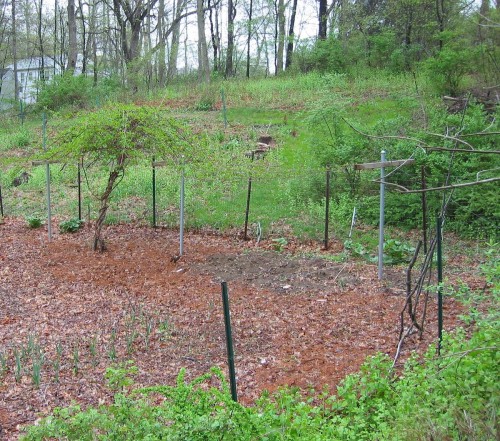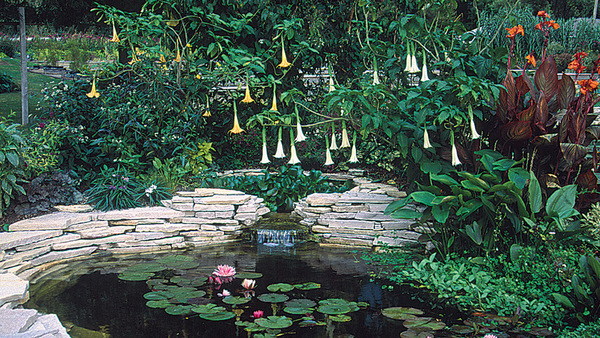
So you’ve decided to grow some veggies this year? Welcome to the club. Before you decide on what to grow or pick up a spade, you need to make some basic decisions about your garden’s location, size, and shape. Here are some things to consider.
Location
Walk around your property as you try to decide on a location for your garden-to-be.
Vegetables do best in full sun. You will get decent results with less than that, but in general strive for a site that gets at least six hours a day during the summer. Remember that sun patterns change dramatically with the seasons; a site that looks good in April may be too shady when the leaves come out.
Another factor to consider is proximity to your kitchen. You are more likely to check out your garden frequently if it is close to the house. My garden is maybe 30 feet from the kitchen door. When I need some parsley or mint, or maybe a few more tomatoes for a salad, it’s not a big deal to go out and get them.
If you have a choice, a flat area is better than a hilly one. A gently sloped site can work well, especially one that faces south or west.
What about water? You will most likely want a source close by, be it an outside tap, a rain barrel, or even a stream or pond.
Don’t despair if your lot is is very small. Even if you don’t see a way to create a separate garden area, you can probably tuck a couple of vegetable plants in somewhere: near the house or by the garage, perhaps. Or on the deck in containers.
Size and shape
For a garden of moderate size, aim for 400 square feet (20×20) to 625 square feet (25×25). You’ll have enough space to grow several different crops, but not so much that you’ll be overwhelmed. If even that seems daunting, start small. You can always enlarge the space later.
Gardens are generally square or rectangular, but they don’t have to be. You may want a different configuration to take advantage of sun patterns, to work around boulders, or just for artistic reasons. The plants won’t care if they are arranged in straight lines or curves.
Fine Gardening Recommended Products

Corona E-Grip Trowel
Fine Gardening receives a commission for items purchased through links on this site, including Amazon Associates and other affiliate advertising programs.

A.M. Leonard Deluxe Soil Knife & Leather Sheath Combo
Fine Gardening receives a commission for items purchased through links on this site, including Amazon Associates and other affiliate advertising programs.

The New Organic Grower, 3rd Edition: A Master's Manual of Tools and Techniques for the Home and Market Gardener, 30th Anniversary Edition
Fine Gardening receives a commission for items purchased through links on this site, including Amazon Associates and other affiliate advertising programs.



















Comments
Log in or create an account to post a comment.
Sign up Log in